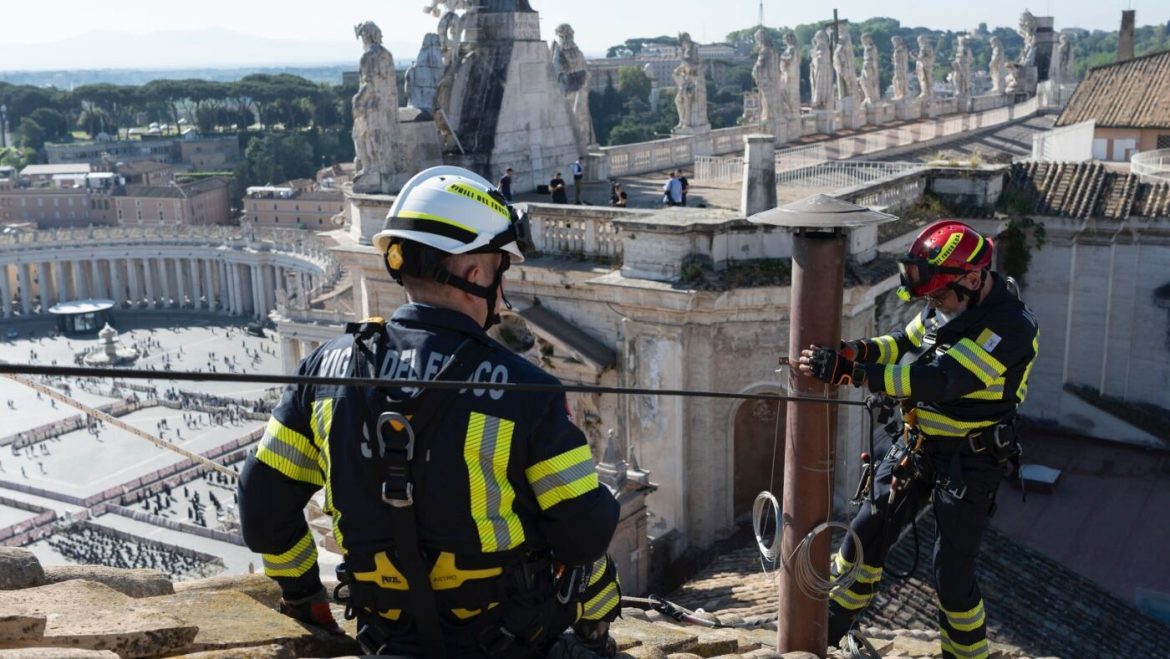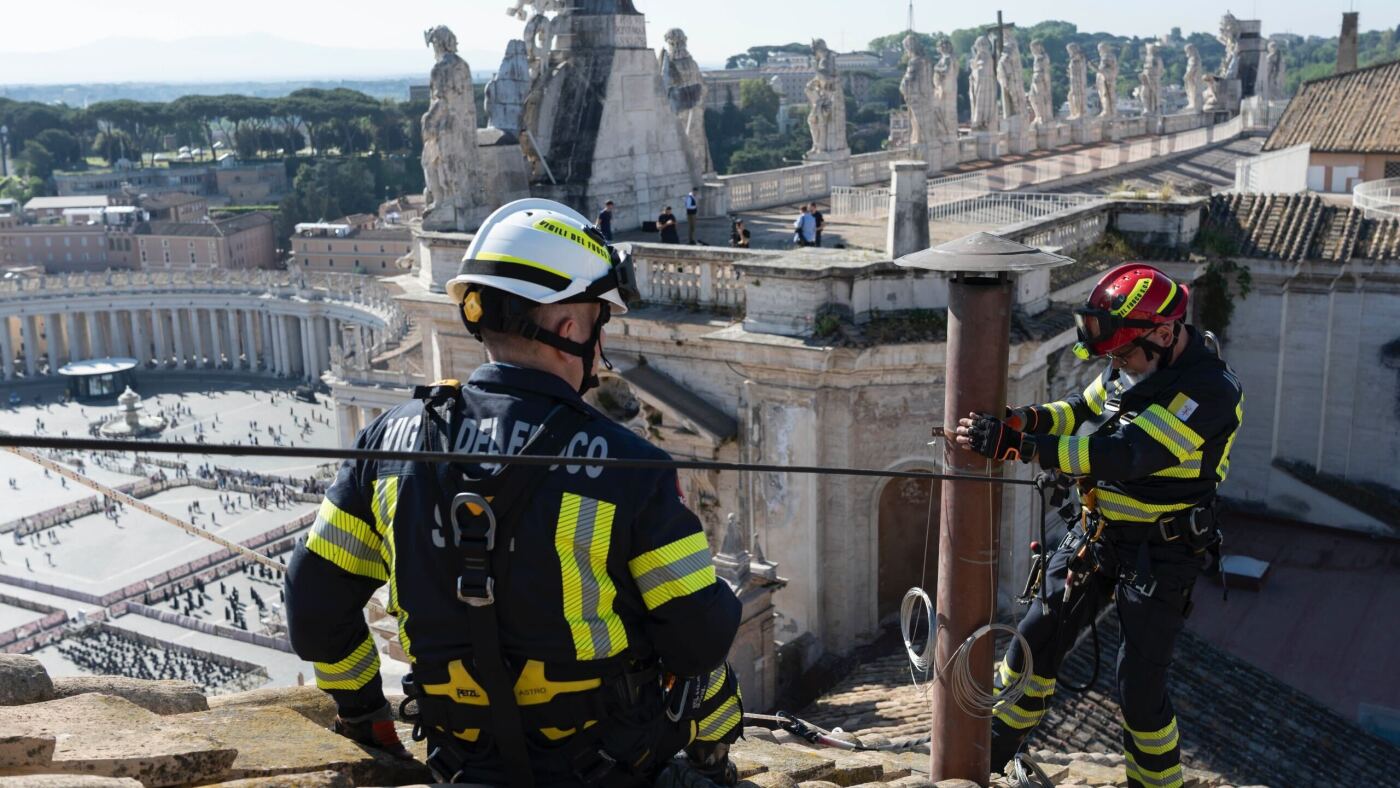The Symbolic Significance and Logistics of the Sistine Chapel Chimney Installation
The installation of the chimney on the roof of the Sistine Chapel is a poignant moment in the lead-up to the papal conclave. This seemingly simple act carries profound symbolic weight and intricate logistical considerations. It serves as a beacon of tradition and a harbinger of change, signaling the world about the election of a new pope. This report delves into the historical context, the technical aspects, and the broader implications of this ritualistic installation.
Historical Context and Symbolism
The Tradition of the Chimney
The use of smoke signals to announce the election of a new pope dates back to the early 20th century. The practice began in 1914, during the conclave that elected Pope Benedict XV. Before this, the announcement of a new pope was made through various means, including the ringing of bells and the reading of proclamations. The chimney, with its distinctive black and white smoke, has since become an iconic symbol of the papal election process.
The black smoke, known as *fumata nera*, indicates that the cardinals have not reached a consensus, while the white smoke, or *fumata bianca*, announces the election of a new pope. This visual language is universally understood, transcending linguistic and cultural barriers, and has captivated the world’s attention during papal transitions.
The Sistine Chapel: A Sacred Stage
The Sistine Chapel, with its breathtaking frescoes by Michelangelo, is more than just a venue for the conclave; it is a sacred space imbued with centuries of history and spirituality. The installation of the chimney on its roof is a tangible link between the past and the present, reminding the world of the enduring traditions of the Catholic Church.
Logistical Considerations and Technical Aspects
The Installation Process
The installation of the chimney is a meticulous process carried out by Vatican firefighters. The chimney is temporarily attached to the roof of the Sistine Chapel, connecting to a stove inside the chapel where the ballots are burned. The smoke produced is directed through the chimney, making it visible to the thousands of people gathered in St. Peter’s Square and to the global audience watching via live broadcasts.
The chimney itself is a simple, yet effective, piece of engineering. It is designed to withstand the heat and pressure of the burning ballots, ensuring that the smoke is visible and distinct. The color of the smoke is determined by the materials added to the ballots. For black smoke, chemicals are used to produce a dark hue, while white smoke is achieved by burning the ballots without any additives.
The Timing and Frequency of Smoke Signals
During the conclave, smoke signals are released twice a day, at around noon and 7 p.m. local time. This schedule ensures that the world is kept informed about the progress of the election. The timing is also symbolic, aligning with the traditional hours of prayer and reflection in the Catholic liturgical calendar.
The smoke signals are not just about announcing the election of a new pope; they also serve as a reminder of the cardinals’ deliberations and the solemnity of the conclave. The absence of smoke, which historically signaled a successful election, is no longer used, emphasizing the importance of the smoke signals as the primary means of communication.
The Broader Implications
Global Attention and Media Coverage
The installation of the chimney and the subsequent smoke signals draw global attention to the Vatican and the Catholic Church. Media outlets from around the world cover the event, providing live updates and analysis. This extensive coverage not only informs the public but also highlights the significance of the papal election in the global religious landscape.
The chimney installation is a powerful visual symbol that captures the imagination of people worldwide. It represents the intersection of tradition and modernity, faith and technology, and the universal language of symbols.
The Role of Technology and Media
In the digital age, the smoke signals from the Sistine Chapel chimney are amplified through social media, live streams, and global news networks. This technological integration ensures that the message of the smoke signals reaches every corner of the globe instantaneously. The use of technology in this ancient ritual underscores the adaptability of the Catholic Church and its ability to communicate effectively in the modern world.
Conclusion
A Beacon of Continuity and Change
The installation of the chimney on the roof of the Sistine Chapel is a poignant moment that bridges the past and the present. It is a testament to the enduring traditions of the Catholic Church and its ability to adapt to the changing times. The smoke signals, with their simple yet powerful visual language, continue to captivate the world, reminding us of the sacred and solemn process of electing a new pope.
As the world watches the smoke rise from the Sistine Chapel, it is a moment of anticipation and reflection. It is a reminder of the continuity of faith, the strength of tradition, and the hope for a new chapter in the leadership of the Catholic Church. The chimney, with its humble yet significant role, stands as a beacon of continuity and change, guiding the faithful and the curious alike through the sacred process of papal election.


